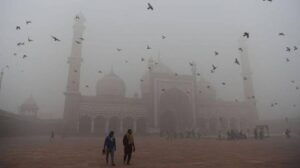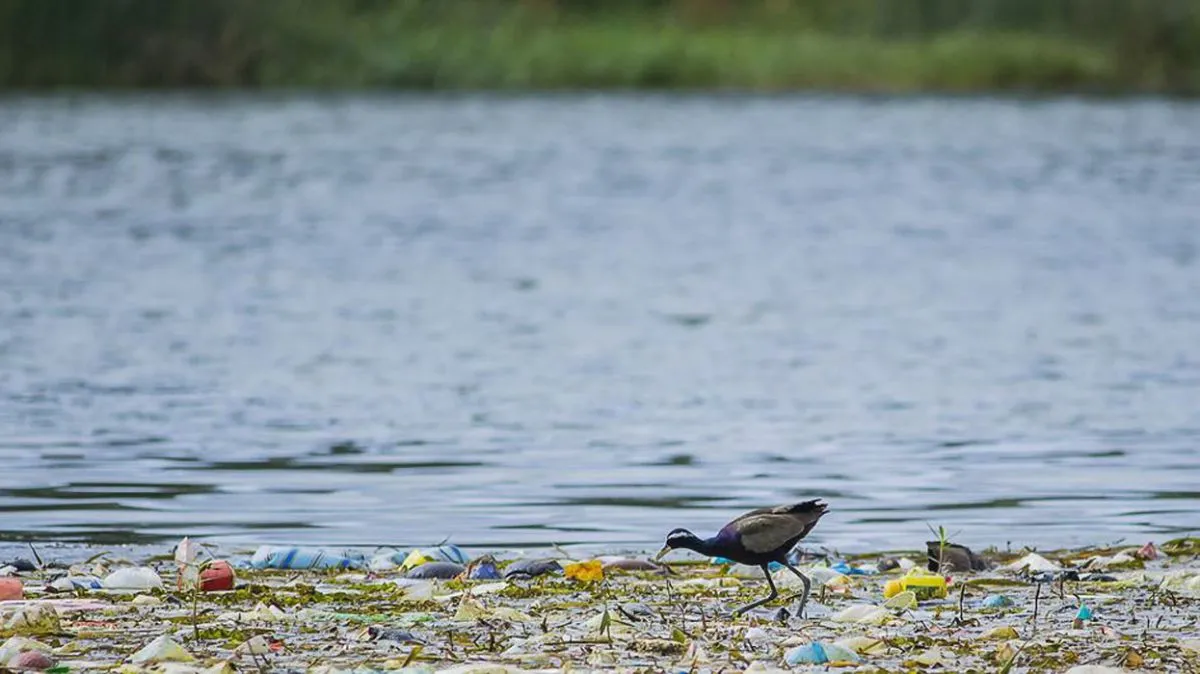According to experts, pollution occurs when harmful substances or elements are introduced into an environment, disrupting its natural balance. These pollutants can vary in their impact, depending on their toxicity and concentration. Although it is often associated with human activity, there are also natural sources of pollution, such as volcanic eruptions.
While a large part of pollution comes from human activities, such as burning fossil fuels, pesticide use, or industrial practices, not all pollution is of human origin. Natural phenomena like volcanic eruptions release large amounts of gases and toxic particles that also pollute the environment, known as natural pollution.
Generally, the effects of pollution are severe, not only for ecosystems but also for human health, as it can lead to respiratory problems, cardiovascular diseases, and even cancer. The main types of pollution include atmospheric, aquatic, soil, noise, and visual pollution.
 Contamination in New Delhi. Photo: Social media.
Contamination in New Delhi. Photo: Social media.
Natural and Anthropogenic Pollution
Apart from natural pollution, which is understood as that which occurs as a result of different natural phenomena like volcanic eruptions, among others, there is also anthropogenic pollution. The latter is caused by direct human action, which can be classified as follows:
Types of Pollution
-
1. Air Pollution
This type of pollution involves the release of substances that alter the composition of the air. Among the main pollutants are carbon dioxide (CO₂), nitrogen oxides (NOx), sulfur dioxide, and suspended particles.
Air pollution has serious health consequences, including respiratory diseases such as asthma, lung cancer, and COPD. According to the WHO, nearly seven million people die each year due to poor air quality.
-
2. Water Pollution
It occurs when harmful substances enter the water, altering its quality. Common examples include untreated sewage discharge, oil spills, and the accumulation of heavy metals such as mercury.
Effects include destruction of aquatic ecosystems, human diseases due to the consumption of contaminated organisms, and economic losses in sectors like fishing and tourism.
-
3. Soil Pollution
Refers to the degradation of the earth’s surface layer by toxic substances, such as agricultural pesticides and poorly managed waste.
This type of pollution affects agriculture, kills local flora and fauna, and threatens food security by damaging the fertile soils necessary for food production.
-
4. Noise Pollution
Exposure to excessive noise levels, generated by traffic, machinery, or noisy events, causes stress, insomnia, headaches, and hearing loss. It also severely affects animals, altering their behavior and communication patterns.
-
5. Visual Pollution
Characterized by an excess of visual elements, such as billboards, signs, and banners, saturating the environment. This type of pollution not only affects the aesthetics of cities but also can distract drivers, increasing the risk of accidents.
For animals, especially migratory birds, an excess of light and visual elements can be lethal, disorienting them in their journey.
Pollution, whether natural or caused by humans, has a direct impact on ecosystems and the quality of life for people. Adopting sustainable practices, properly managing waste, and reducing pollutant emissions are essential steps to mitigate this problem and preserve the planet for future generations.
 Urban plastic pollution
Urban plastic pollution
What are the environmental risks of pollution?
According to the statistics from the report by the WHO in 2006 – Healthy Environments and Disease Prevention – 24% of the global burden of disease and 23% of all deaths can be attributed to environmental factors. Moreover, the report showed that 36% of deaths in children aged 0 to 14 years are due to environmental causes.
The report revealed that the main environmental risks are: lack of access to safe water, unsatisfactory basic sanitation, air and soil pollution, presence of insects and other disease-transmitting animals, ionizing and non-ionizing radiations, presence of metals like lead, mercury, and other chemicals, among which pesticides stand out.
Furthermore, diseases with the highest burden of modifiable environmental factors include: diarrhea, respiratory infections, accidental injuries, and malaria. There is also a new morbidity associated with environmental factors, in conditions such as asthma, neurodevelopmental disorders, congenital malformations, cancer, among others.
Have you visited our YouTube channel yet? Subscribe now!

